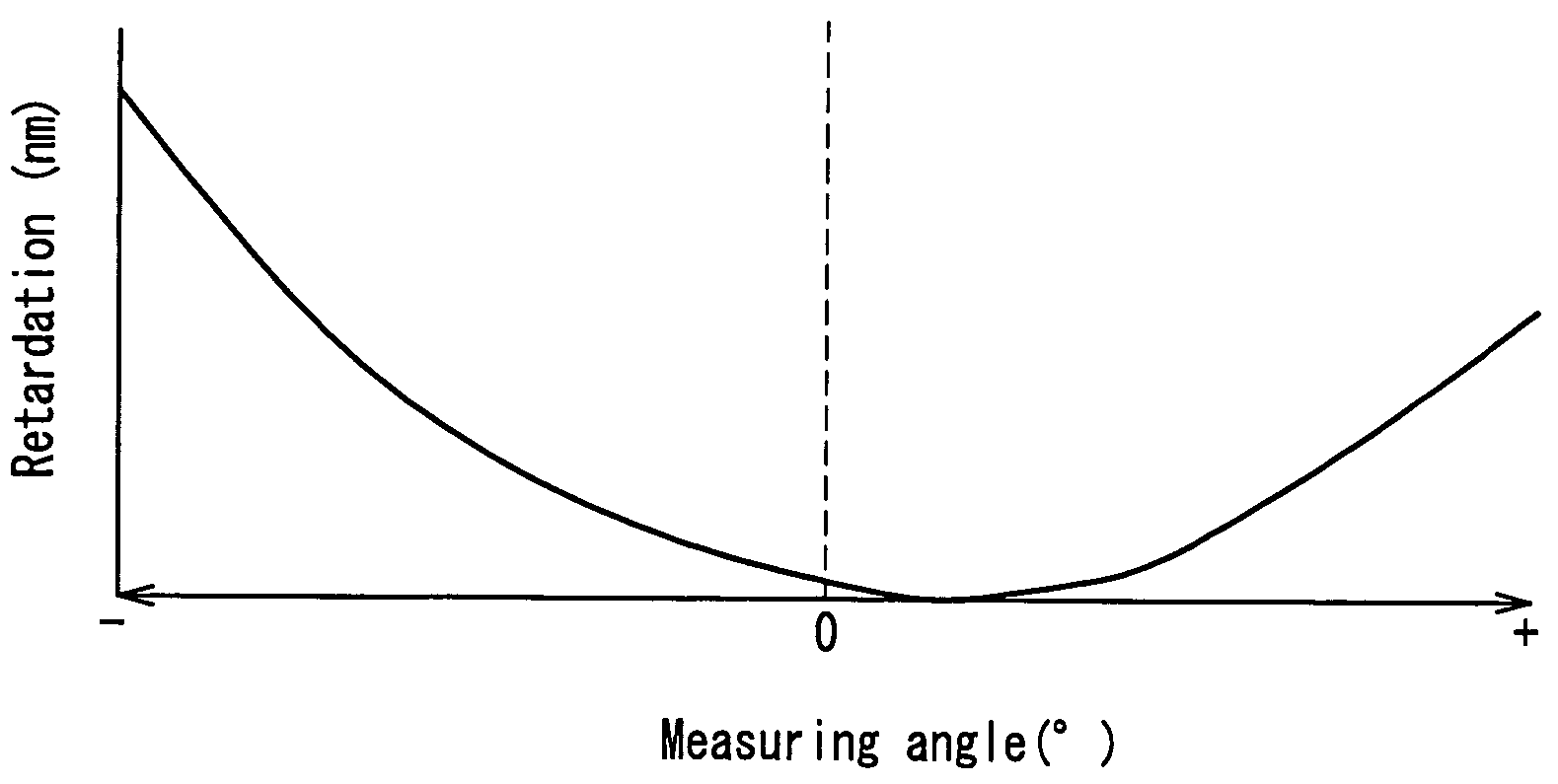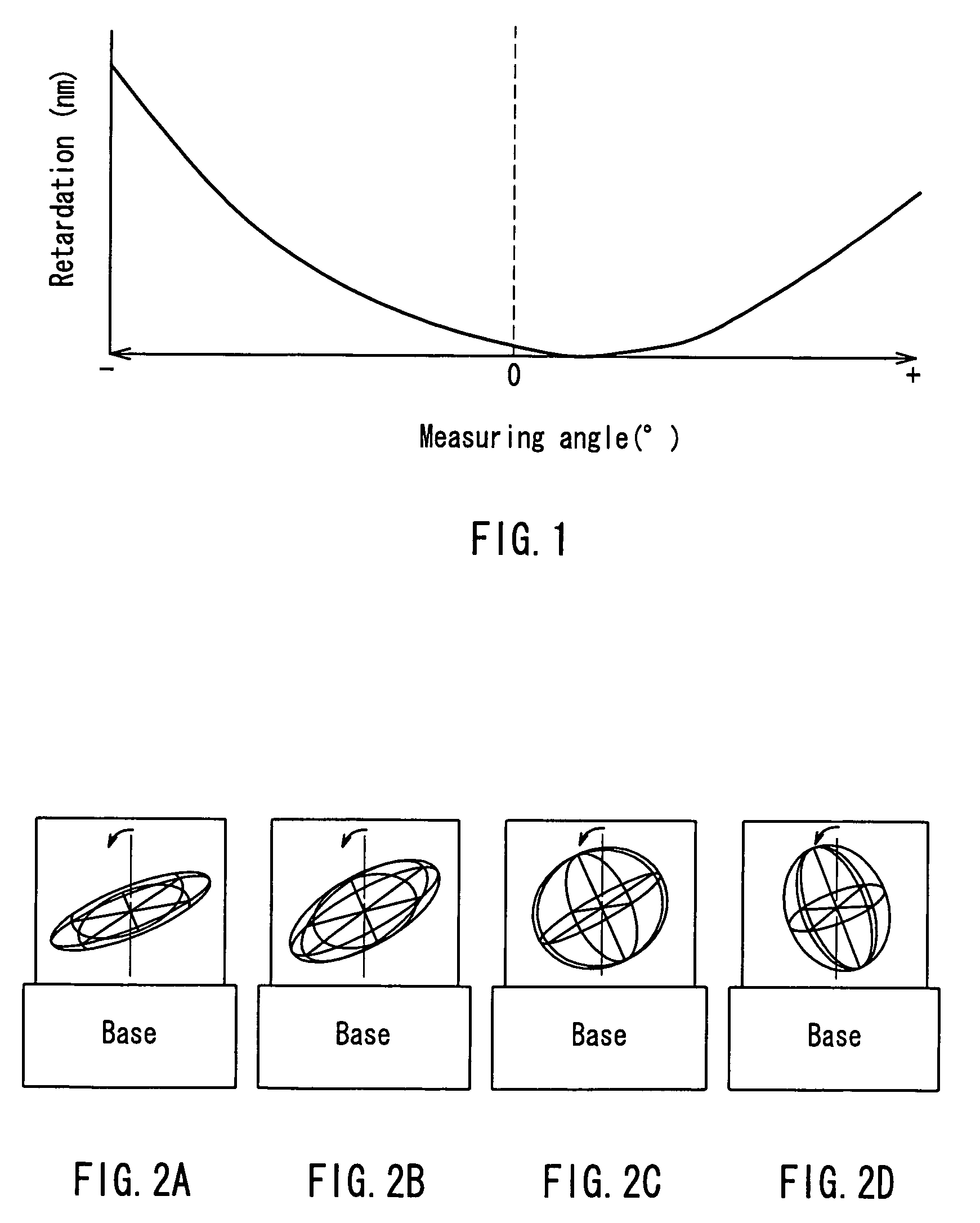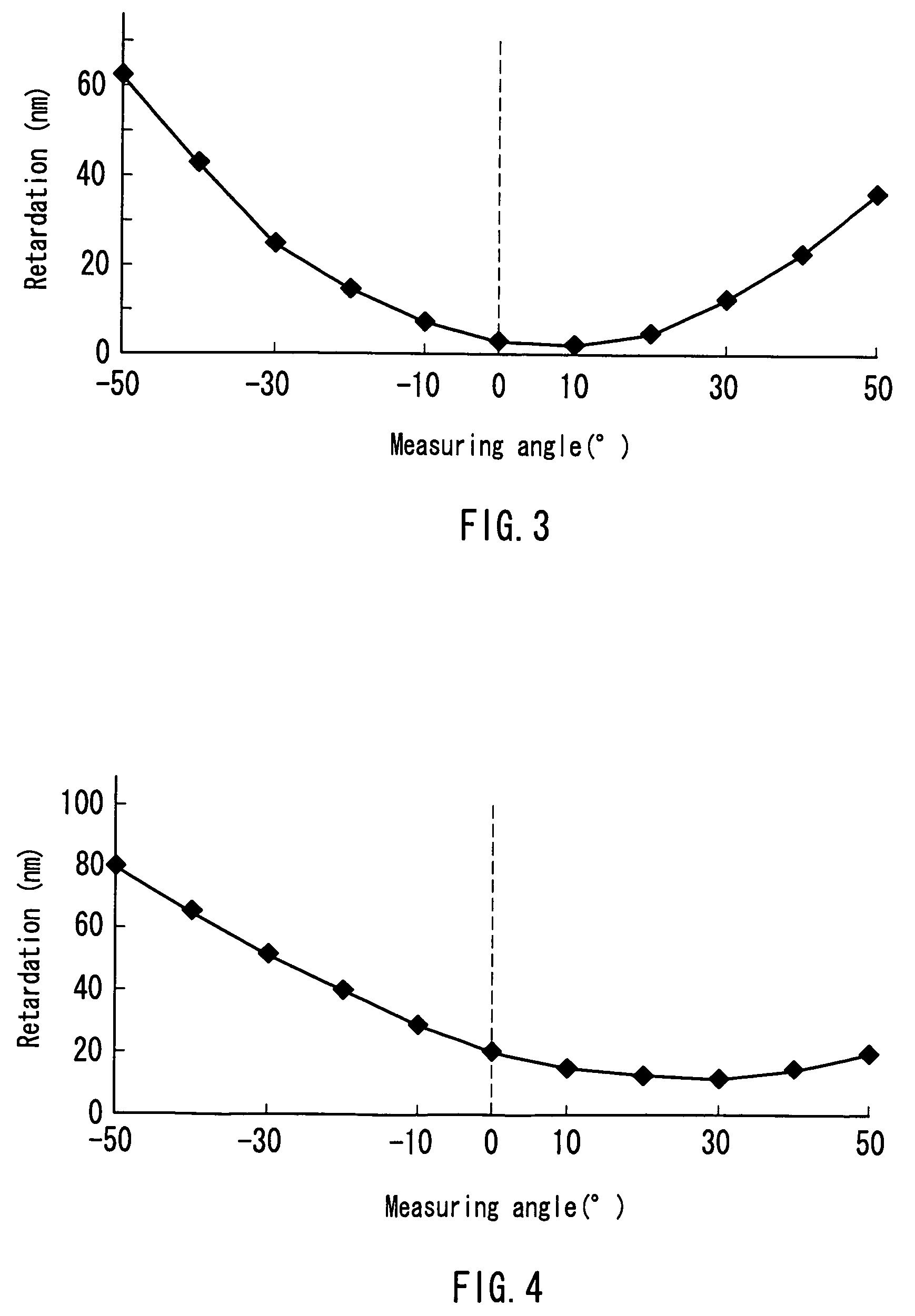Inclined optical compensation film, method for producing the same and liquid crystal display including the same
a technology of optical compensation and film, applied in the direction of polarising elements, thin material processing, instruments, etc., can solve the problems of difficult to change the inclination angle or retardation, film also has problems, and achieve excellent optical characteristics
- Summary
- Abstract
- Description
- Claims
- Application Information
AI Technical Summary
Benefits of technology
Problems solved by technology
Method used
Image
Examples
example 1
[0195]Polyimide having a weight-average molecular weight (Mw) of 70,000 synthesized from 2,2′-bis(trifluoromethyl)-4,4′,5,5′-biphenyl tetracarboxylic dianhydride and 2,2′-bis(trifluoromethyl)-4,4′-diaminobiphenyl was dissolved in cyclohexanone, thus preparing a 10 wt % polyimide solution. Then, the surface of a 75 μm thick PET film (manufactured by Toray Industries. Inc.; trade name S27) was coated with this polyimide solution. Thereafter, hot air was blown onto this coating film with a blower, thereby inclining polyimide in the coating film. The condition of this treatment was such that the air velocity was 20 m / sec, the air temperature was 100° C., the duration was 5 minutes and the distance between the surface of the coating film and the front end of the blower was 30 cm. The laminate of the PET film and the coating film was placed on a belt and sent out continuously at a speed of 2 m / minute, whereby the hot air was blown onto the laminate. Subsequently, by heating and drying at ...
control example 1
[0200]The surface of a glass plate was coated with a 1 wt % aqueous solution of polyvinyl alcohol (trade name NH-18; manufactured by The Nippon Synthetic Chemical Industry Co., Ltd.) with a spin coater, followed by drying at 120° C. for 5 minutes. In this way, a 0.5 μm thick PVA film was formed on the glass plate. Further, the surface of the PVA film was rubbed five times in one direction with a commercially available rubbing cloth, thus forming an alignment layer. The surface of this alignment layer was coated with a 10 wt % tetrachloroethylene solution of triphenylene-based discotic liquid crystal represented by the chemical formula below with a spin coater, followed by heating at 200° C. for 5 minutes, thereby aligning the liquid crystal material. By this heating treatment, a 2 μm thick inclined birefringent layer having a birefringence (Δn) of about 0.040 was formed on the alignment layer.
[0201]
[0202]Similarly to Example 1 described above, the retardation of this inclined birefr...
PUM
| Property | Measurement | Unit |
|---|---|---|
| thickness | aaaaa | aaaaa |
| measuring angle | aaaaa | aaaaa |
| measuring angle | aaaaa | aaaaa |
Abstract
Description
Claims
Application Information
 Login to View More
Login to View More - R&D
- Intellectual Property
- Life Sciences
- Materials
- Tech Scout
- Unparalleled Data Quality
- Higher Quality Content
- 60% Fewer Hallucinations
Browse by: Latest US Patents, China's latest patents, Technical Efficacy Thesaurus, Application Domain, Technology Topic, Popular Technical Reports.
© 2025 PatSnap. All rights reserved.Legal|Privacy policy|Modern Slavery Act Transparency Statement|Sitemap|About US| Contact US: help@patsnap.com



